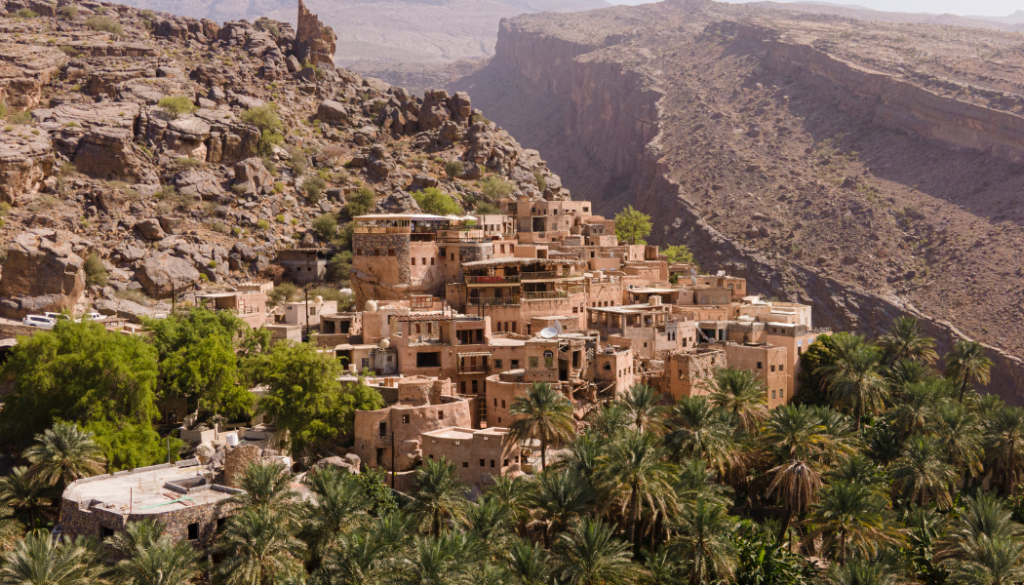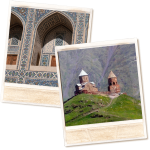Photo credit: Cultural Travel with MIR
Journeys for the Culturally Curious: Where to Go Next
5 Destinations That Reward Curiosity

Are you a curious traveler? One who finds the greatest rewards not (just!) from tourist attractions but through conversations and interactions with the people around you? From chats with artisans, walks through ancient streets, and meals with locals? Here, history isn’t just locked away in museums – it’s part of daily life, woven into the rhythms of cultural travel.
For the culturally curious, travel isn’t about ticking off sights – it’s about understanding a place through its traditions, people, and history. Our journeys go beyond the ordinary, where UNESCO-listed sites coexist with living traditions, and a true sense of a place comes through in everyday experiences. Whether exploring the monasteries of the Caucasus, the fortresses of the Balkans, or the desert strongholds of Oman, there’s a journey waiting to be uncovered. Read on to find out where your curiosity can lead you next.
1. Oman: The Middle East’s Best-Kept Secret

Oman offers a glimpse of Arabia before modern excess — a land of sweeping deserts, hidden wadis, and frankincense-scented souqs. Walk the ancient streets of Nizwa, once a center of Islamic scholarship and trade in Oman, or explore the massive forts that once guarded key routes. In Muscat, you’ll find a capital that has resisted the skyscraper race, preserving its old-world charm. Taste the food of Oman, which, in Anthony Bourdain’s words, “is a mix of flavors, ingredients, and tastes from Arabia and from all over Oman’s former Empire.” Venture with Bedouins into the desert, where traditions of hospitality run as deep as the dunes.
Must-See: UNESCO-listed Bahla Fort, the Frankincense Trail, and the traditional village of Misfat Al Abriyeen.
Why go now? Experience Arabia’s rich traditions in a country that values authenticity over spectacle.
2. Armenia: Where Ancient Culture Meets Mountain Landscapes

Armenia is a land of monasteries perched on clifftops, khachkar (cross-stone) carvings, and a history that stretches back to the world’s first Christian nation. In Yerevan, modern cafes sit alongside Soviet architecture, while rural villages still follow time-honored ways of life. Visit Echmiadzin, the spiritual heart of the Armenian Church, or hike to Geghard Monastery, partly carved into a mountain. And no journey is complete without a glass of Armenian wine – produced in the same valleys where some of the world’s oldest winemaking traditions began over 6,000 years ago. This blend of ancient heritage and living culture makes Armenia a compelling choice for cultural travel.
Must-See: Geghard Monastery (UNESCO), Tatev Monastery, Garni Temple.
Why go now? Armenia’s cultural treasures are as rich as Europe’s but nowhere near as crowded.
3. Albania: Echoes of the Past in Europe’s Most Intriguing Corner

Albania has lived in the shadow of its more famous neighbors for decades, but its time has come to shine in its own right. This small but diverse country is home to Ottoman-era towns, untouched Ionian and Adriatic coastlines, and a fascinating mix of cultures shaped by Illyrians, Romans, Byzantines, and Ottomans. Wander through the stone city of Gjirokaster, explore the ruins of Butrint (once a Greek, then Roman, then Venetian stronghold), and experience Albania’s unique blend of Southern European and Middle Eastern influences.
Must-See: Butrint (UNESCO), Berat’s “thousand windows,” Llogara Pass.
Why go now? To experience a country still emerging from isolation, where traditions remain strong, and the past feels close.
4. Bulgaria: Europe’s Overlooked Cultural Crossroads

Bulgaria is one of Europe’s oldest nations, with a history that spans Thracian tombs, Byzantine churches, and Ottoman mosques. Sofia, the capital, reflects Bulgaria’s complex past with Roman ruins and imposing communist-era boulevards, while in the countryside, villages keep age-old traditions alive in daily life. Visit Rila Monastery, a masterpiece of Bulgarian Renaissance art, or explore Plovdiv, one of Europe’s oldest continuously inhabited cities. And for those who love history and cultural travel with a side of indulgence, Bulgaria’s winemaking tradition dates back to ancient Thracian times but continues to evolve today.
Must-See: Rila Monastery (UNESCO), Plovdiv Old Town, Nessebar’s ancient churches.
Why go now? It’s one of Europe’s last truly under-the-radar cultural havens.
5. Romania: Medieval Legends and Timeless Traditions

Romania is a land of fortified churches, painted monasteries, and Saxon villages frozen in time. While many know it for its Dracula legends, the real magic lies in places like Sighisoara, a fairy-tale medieval town where cobbled streets wind past colorful facades, or Maramures, where wooden churches and centuries-old customs still define daily life. Explore the fortified city of Sibiu, admire the stunning frescoes of Bucovina’s painted monasteries, and experience a way of life where centuries-old traditions still shape daily rhythms.
Must-See: Sighisoara (UNESCO), the Painted Monasteries of Bucovina, Peles Castle.
Why go now? Romania is a living museum of medieval Europe, without the crowds.









